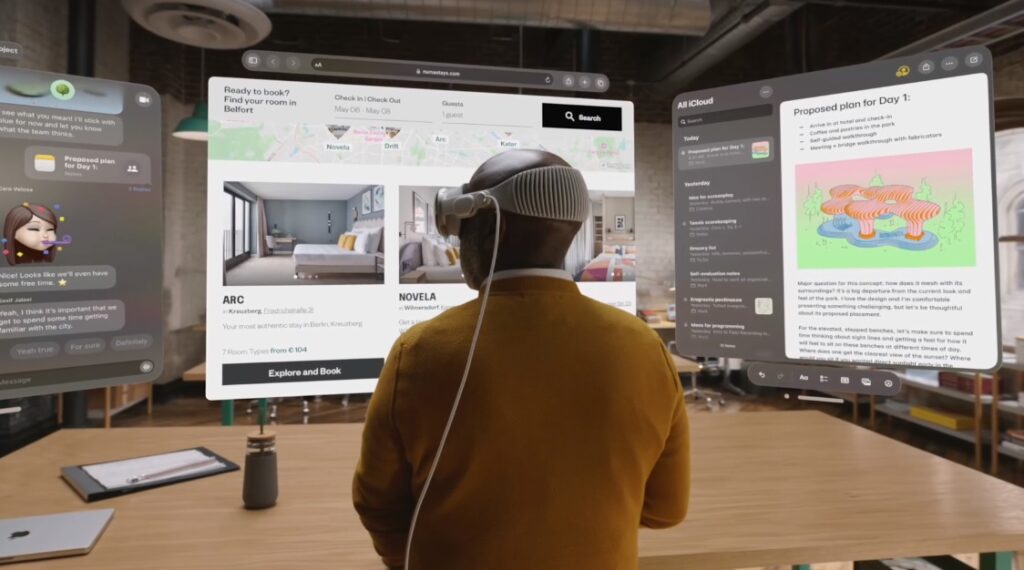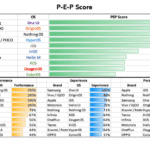Apple WWDC 2023 delivered a cascade of captivating announcements, leaving tech enthusiasts in awe. Amidst the anticipated software updates for Apple’s diverse product lineup and the grand reveal of the impressive 15-inch MacBook Pro, the spotlight shone on a groundbreaking addition to Apple’s illustrious portfolio—the highly anticipated Apple Vision Pro AR/VR headset. Finally unleashed, this revolutionary device astounds with its remarkable specifications and visionary design.

Interestingly, Apple has chosen not to refer to it as an AR/VR headset; instead, they have dubbed it the “Spatial Computer.” According to Apple, this groundbreaking product seamlessly amalgamates digital content with the physical world, opening up new possibilities and transforming the way we perceive mixed reality. In fact, the unveiling of Apple’s AR/VR headset is poised to send most companies back to the drawing board to rethink their hardware-software strategy for the mixed reality product market.
Fueling the innovation behind the Vision Pro is its fully three-dimensional user interface, VisionOS, which responds effortlessly to a user’s gaze, gestures, and voice. This intuitive interaction with digital content creates a sense of tangible presence in the user’s surroundings. Although such capabilities are not entirely novel, Apple’s execution sets it apart from the competition, setting a new benchmark for user experience.
This long-anticipated device holds the potential to redefine the landscape of Extended Reality (XR) or fall victim to the fate shared by countless prototypes that have emerged and disappeared over the years. To ascertain the outcome, let us delve deeper into the exceptional specifications of the Vision Pro and its capabilities.

Apple Vision Pro Key Specifications
Boasting an ultra-high-resolution display system, the Vision Pro dazzles with 23 million pixels spread across two displays—equivalent to a 4K TV for each eye—made possible by cutting-edge micro-OLED technology. With 12 cameras, five sensors, and six microphones, alongside the innovative dual-chip design of M2 + R1, the AR/VR headset will ensure unparalleled performance. The M2 chip stands as a standalone powerhouse, while the brand-new R1 chip processes inputs from cameras, sensors, and microphones, seamlessly rendering content in real-time—appearing before the user’s eyes within a mere 12 milliseconds, eight times faster than the blink of an eye.

These remarkable figures surpass anything available in the current VR headset market, granting Apple’s VR headset an undeniable edge in performance. With unrivaled contrast levels and the ability to emulate the best HDR-enabled displays, the Vision Pro offers viewers unprecedented mixed-reality experiences. Combined with infinite screen real estate, immersive audio, intuitive controls, and compatibility with the Magic Keyboard and Trackpad, the Vision Pro presents itself as a potent system capable of redefining both productivity and entertainment.
A Hefty Price Tag of $3,499 For a First Gen. Product
Such technological miracles, however, come at a cost—literally. The Apple Reality VR Headset costs $3,499 (roughly INR 2.90 lakh), which places it in the high-end bracket typical of Apple’s ultra-premium products. Because it is the first generation product in a category that is still fighting to gain traction, the headset may encounter greater problems than other AR/VR headsets on the market. Furthermore, there is an intriguing factor that may explain the broader issues faced by AR/VR goods as a category.

Contrasting AR/VR Headsets with Consumer Electronics
The crux lies not in the AR/VR products themselves or the technological advancements they embody, but rather in their practicality and relevance to everyday users. Despite the advancements or steep pricing of VR/AR headsets, they often remain relegated to accessory status or provide fleeting moments of entertainment for individuals. The initial allure of owning a VR headset swiftly fades, and users gravitate toward more mainstream devices like smartphones, tablets, PCs, and smart TVs for their work and leisure activities.
In contrast, devices such as smartphones and notebooks offer a higher degree of practicality and a broader range of real-life applications. Whether it’s consuming, streaming, or creating and editing content, smartphones, tablets, notebooks, and desktops provide a multifaceted suite of activities that keep users engaged throughout the day.
However, a different narrative unfolds when considering the industrial applications of AR/VR technology. In these domains, the technology operates on a grander scale and proves significantly more valuable. But that’s a topic for another day.

Apple positions the new Apple Vision Pro as a comprehensive solution to satisfy all media, productivity, and multitasking needs of individuals. They contend that it has the potential to replace individual digital devices entirely. Yet, the critical question lingers: Can it truly outperform each device individually? This is the query that sparks my curiosity and warrants the considerable investment in a product like the Vision Pro.
Apple confidently asserts that the Vision Pro stands years ahead, distinct from anything we have witnessed before. While this claim may hold merit, it may also account for its potential struggle to resonate as a mainstream product for the masses—at least, not in the immediate present.
The ultimate test lies in whether the Vision Pro can transition from a pricey accessory to a mainstream product. Will it offer a compelling enough proposition to become a staple device for everyday users? Can it successfully navigate the fine line between novelty and practicality? These questions remain unanswered but are critical in determining the Vision Pro’s fate in the mass market.





